#tengboche
Explore tagged Tumblr posts
Text

#Nepal#Everest#Base#Camp#Trek#trekking#Tengboche#Guest#House#room#view#comfortable#comfort#Himalaya#Himalayan#Mountains#mountain#Mount#regional gothic
2 notes
·
View notes
Text

On the trail to Thyangboche (Tengboche)
#trekking#everest base camp trek#khumbu#mani stone#om mani padme hum#adventure#horizon5 adventure#nepal#mountain#himalayas#himalaya#hiking#tengboche
72 notes
·
View notes
Text




Everest Base Camp Trek in Nepal. Exploring the hidden valley of Khumbu region in Sagarmatha National Park, reaching the world's tallest mountain Everest base camp, feel the serenity of Khumbu glaciers and snow peak mountain. Trekking to Everest Base Camp is a once in a lifetime journey through the Sherpa villages.
#EBC trtek#12 day EBC trek#Khumbu Glacier#Mt. Everest#Kala Patthar hike#EBC trek#Photography Tour#Amadablam base camp trek#Namche Bazar#Tengboche#Nangkharshang hill#Hiking#Day tour
1 note
·
View note
Photo

Makalu Sherpani Col & Amphu Labtsa Pass - 26 Days - Makalu Sherpani Col & Amphu Labtsa Pass - 26 DaysUntitled Part 1 (on Wattpad) https://www.wattpad.com/1458693804-makalu-sherpani-col-amphu-labtsa-pass-26?utm_source=web&utm_medium=tumblr&utm_content=share_reading&wp_uname=teamhimalaya Team Himalaya offers adventurous to extreme trekking to Makalu Sherpani Col & Amphu Labtsa Pass in the remote corners of Makalu and massif Khumbakarna Himal range and continues to Everest Mountains and the valley of Khumbu and Imjatse, a sheer adrenaline adventure for hardy and tough trekkers and climbers who needs extra challenging trip in the Himalaya. Team Himalaya has just the right adventure for trekkers and climbers to challenge the high passes within Makalu and Everest region in the most remote part of Eastern Himalaya in the hidden corners where the route has to be explored and pioneered as per your destination. Makalu Sherpani Col & Amphu Labtsa is not just trekking for a few days it will be a mountaineering challenge facing high hidden routes from Makalu, Barun mountains towards Hinku and Imjatse valley towards Khumbu and Everest area offering some challenging traverse over Sherpani high col and Amphu Labtsa pass both equals to some same heights at about 5,700 meters ridge passes. Team Himalaya Makalu Sherpani Col & Amphu Labtsa pass visiting the world's 3rd highest Mt. Kanchenjunga at 8, 586 meters / 28,169 ft and the world's 5th highest Mt. Makalu at 8, 463 m / 27, 766 ft and towards number one Mt. Everest 8,848 meters / 29, 028 ft with range of 6-7000 meters peaks. Makalu Sherpani Col & Amphu Labtsa Pass, located in remote Nepal's Far North East, starts with an awesome scenic flight to Tumlingtar in the warmer area of Arun Valley and then heading towards mid hills villages and then to complete wilderness in the harmony of nature and tall mountains. Trek leads through enchanting Barun valley famous for its rare species of vegetation and flora and fauna and then towards Makalu Base Camp with tremendous views of Khumbukarna, Kanchenjunga, Baruntse, Chamling, and towering Mt. Makalu with a rare face of Mt. Everest the east face known as the Kangsung which can be seen only from Makalu side.
#base#camp#col#everest#labtsa#makalu#monastery#mt#pass#passtrekking#sherpani#tengboche#trek#trekking#trekkinginnepal#adventure#books#wattpad#amreading
0 notes
Text


" On the Road to Tengboche " // © black.sail
#Himalayas#nature#landscape#Mountainscape#Mount#Winter#Snow#Expedition#Exploration#photography#aesthetics#wanderlust#explore#follow#discover
137 notes
·
View notes
Text

Geographical Overview
Gorak Shep is located within the Sagarmatha National Park, home to the Sherpa people, renowned for their skills as guides and mountaineers. It is the final stop on the most common trekking routes to Everest Base Camp from Lukla (2,860 m), following what the Dalai Lama has called “the steps to heaven.”
This route takes trekkers from Lukla to Namche Bazaar, Tengboche, Pangboche, Dingboche, Lobuche, and finally to Gorak Shep. Most trekkers spend the night there since their trekking permits do not allow them to camp at Everest Base Camp.
Additionally, Gorak Shep serves as the best “launch pad” for the ascent of Kala Patthar, which resembles a giant dune looming over the lakebed. For many trekkers, the summit of Kala Patthar, at 5,550 meters, offers the best views of Everest that most will achieve without a climbing permit, which must be obtained in Kathmandu at the Nepal Mountaineering Association.
The climb begins early in the morning when visibility is usually better. It takes about four hours to reach the summit and return. The hiking time from Gorak Shep to Everest Base Camp ranges from 1.5 to 2.5 hours, depending on the weather, acclimatization, and individual fitness levels.
When to Go
The best times for trekking are in spring (March and April) and autumn (October and November), when mountain visibility is ideal, and temperatures are not excessively cold. However, in autumn, competition for lodging can be intense, though trekkers can usually sleep on the dining room floor.
During winter, from December to February, trekking is possible, but the vast majority of accommodations are closed, trails are snow-covered, and the cold is extreme.
Historical Notes
Gorak Shep was the original Everest Base Camp, used by Swiss climbers during their attempt to scale Everest in 1952. The camp was later moved closer to the mountain, just below the Khumbu Icefall.
@samheughanupdates
Cenni geografici
Gorak Shep si trova all'interno del Parco nazionale di Sagarmatha, la patria del popolo Sherpa, famoso per le sue abilità come guide e alpinisti. È l'ultima tappa dei trekking più comuni verso il campo base dell'Everest da Lukla(2.860 m), seguendo quello che il Dalai Lama ha soprannominato "i passi verso il paradiso".
Questo percorso porta gli escursionisti da Lukla a Namche Bazaar, Tengboche, Pangboche, Dingboche, Lobuche e poi a Gorak Shep. La maggior parte degli escursionisti trascorre la notte lì, poiché i loro permessi di trekking non consentiranno loro di accamparsi al campo base dell'Everest.
Inoltre, Gorak Shep fornisce il miglior "trampolino di lancio" per l'ascesa del Kala Patthar, che sembra una duna gigante che incombe sul fondo del lago. Per molti escursionisti, la vetta del Kala Patthar, con i suoi 5.550 metri, offre sia le migliori viste sull'Everest, che la maggior parte raggiungerà senza un permesso di arrampicata, che deve essere ottenuto a Kathmandu, presso la "Nepal Mountaineering Association".
L'arrampicata inizia al mattino presto, quando la visibilità è solitamente migliore. Ci vogliono quattro ore per raggiungere la vetta e tornare indietro. Il tempo di arrampicata da Gorak Shep al campo base dell'Everest varia da 1,5 a 2,5 ore, a seconda del tempo, dell'acclimatazione e della condizione fisica di ogni individuo.
Quando andare
I periodi migliori per il trekking sono la primavera (marzo e aprile) e l'autunno (ottobre e novembre), quando la visibilità della montagna è ideale e la temperatura non è eccessivamente fredda. Tuttavia, in autunno la competizione per i posti letto nei lodge può essere intensa, sebbene normalmente gli escursionisti possano dormire sul pavimento della sala da pranzo.
Durante l'inverno, nei mesi da dicembre a febbraio, è possibile fare trekking, ma la stragrande maggioranza degli alloggi è chiusa, i sentieri sono innevati e il freddo è molto intenso.
Cenni storici
Gorak Shep era l'originale campo base dell'Everest, utilizzato dagli alpinisti svizzeri nel tentativo di scalare l'Everest nel 1952. Successivamente il campo è stato spostato più vicino alla montagna, appena sotto la cascata di ghiaccio del Khumbu.
9 notes
·
View notes
Text

Day 3 Everest base camp trek, on the way to Tengboche Monastery
6 notes
·
View notes
Text
Why the Everest Base Camp Trek is a Must-Do Adventure
The Everest Base Camp Trek (EBC Trek) is one of the most iconic and sought-after trekking experiences in the world. This legendary journey takes you closer to the majestic Mount Everest, the tallest mountain on Earth, while offering breath-taking views of several other towering peaks like Lhotse, Makalu, and Cho Oyu. But the trek isn’t just about the destination—it's about the entire journey, the vibrant Sherpa culture, the serene landscapes, and the sense of accomplishment you'll feel when you reach Everest Base Camp itself.
At Trek The Himalayas, we are passionate about making this adventure as memorable and fulfilling as possible. Here’s why the Everest Base Camp Trek should be on every trekker’s bucket list.
1. Incredible Views of Mount Everest and Other Himalayan Peaks
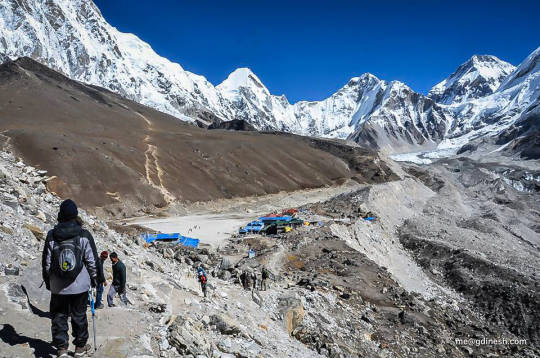
The Everest Base Camp offers unparalleled views of Mount Everest (8,848.86 meters), the highest peak in the world. Along with Everest, you’ll witness other world-famous mountains like Lhotse, Makalu, Cho Oyu, Ama Dablam, and Nuptse. These towering giants will accompany you throughout your trek, constantly reminding you of the awe-inspiring beauty and scale of the Himalayas.
One of the highlights is Kala Patthar—the highest point on the trek at 5,545 meters. From here, you’ll be treated to a panoramic view of Everest, and other peaks such as Pumori, Lhotse, and Nuptse. The sunrise and sunset views from Kala Patthar are magical, with the peaks glowing in the morning light and transitioning to soft golden hues in the evening.
2. Cultural Immersion in the Sherpa Villages
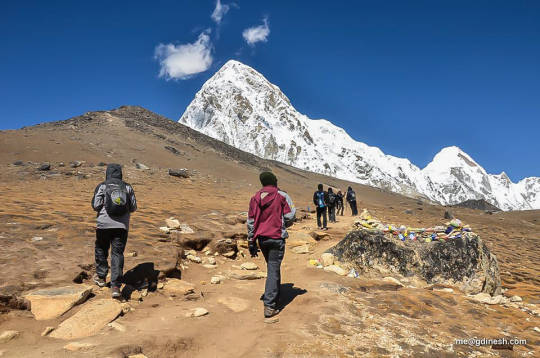
The EBC Trek isn’t just a journey through nature; it’s a cultural expedition as well. The trail passes through several traditional Sherpa villages like Namche Bazaar, Tengboche, and Dingboche, where you’ll have the opportunity to experience the hospitality of the Sherpa people. The Sherpas are known for their resilience and deep connection to the mountains.
Throughout the trek, you’ll encounter Buddhist monasteries, prayer flags, and stupas, offering you a spiritual experience that enhances the physical challenge of the trek. Trekking in the heart of Sherpa culture, you'll learn about their rich traditions and lifestyles and gain insight into their everyday lives in this remote Himalayan region.
3. Experience the Thrill of High-Altitude Trekking

Trekking to Everest Base Camp is not just about reaching a destination; it’s about the physical challenge and mental resilience required to reach it. EBC trekking takes you to elevations of over 5,000 meters, and trekking at high altitudes is not something most people experience. The sensation of reaching Everest Base Camp, standing at the foot of the world’s highest peak, is indescribable. The sense of achievement is unmatched and one of the main reasons why so many trekkers set out on this journey.
The trail offers exhilarating experiences such as crossing suspension bridges over rushing rivers, trekking through dense pine forests, and navigating through rocky terrain. As you climb higher, the views become even more dramatic, motivating you to push through the challenges of the trek.
4. The Sense of Accomplishment at Everest Base Camp

Reaching Everest Base Camp is a dream come true for many trekkers, and it’s one of the most rewarding moments of the trek. After several days of walking through rugged trails, beautiful valleys, and crossing high-altitude passes, arriving at the base camp itself is a thrilling and emotional experience. It is the starting point for those who attempt to summit Mount Everest and represents the culmination of a challenging journey for trekkers from around the world.
The feeling of standing at the base of Everest, with the grandeur of the surrounding peaks and glaciers, is one of the most satisfying accomplishments any trekker can achieve.
5. Exploration of Sagarmatha National Park (UNESCO World Heritage Site)

The Everest Base Camp Trek takes you through Sagarmatha National Park, a UNESCO World Heritage site. The park is rich in biodiversity, home to rare species like the snow leopard, red panda, and Himalayan tahr. It also offers stunning views of rivers, glaciers, and valleys that add to the trek's natural beauty.
As you trek through this national park, you will encounter ancient Buddhist monasteries, including Tengboche Monastery, and cross pristine alpine meadows, crystal-clear lakes, and other awe-inspiring landscapes that showcase the beauty of the Khumbu region.
6. Tea House Stays and the Unique Experience of Mountain Lodging
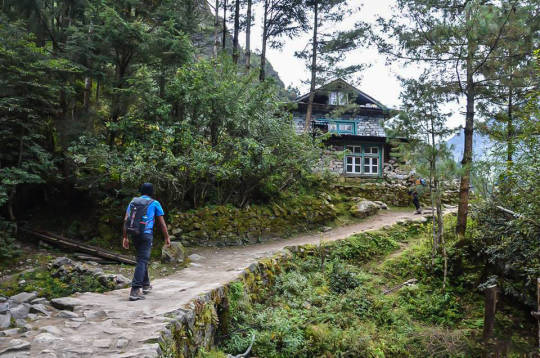
A trek to Everest Base Camp is a teahouse trek, meaning that along the route, you will stay in local tea houses or mountain lodges. These cozy accommodations, built from wood and stone, offer a warm place to rest after a long day of trekking. Staying in these mountain lodges is a unique experience in itself, where you will be surrounded by stunning views of snow-capped peaks.
The tea houses provide meals and shelter, and you can interact with fellow trekkers and locals. It’s a wonderful way to unwind after your daily trek while soaking in the authentic mountain atmosphere.
7. Kala Patthar: The Ultimate Everest Viewpoint

When you reach Kala Patthar, you’ll experience one of the best panoramic views of Mount Everest and its surrounding peaks. Located at an altitude of 5,545 meters, Kala Patthar is the highest point of the trek and offers breathtaking views of Everest, Lhotse, Makalu, and other prominent peaks. Watching the sunrise from here is a surreal experience that many trekkers describe as one of the highlights of the entire journey.
8. A Journey Through History and Legacy
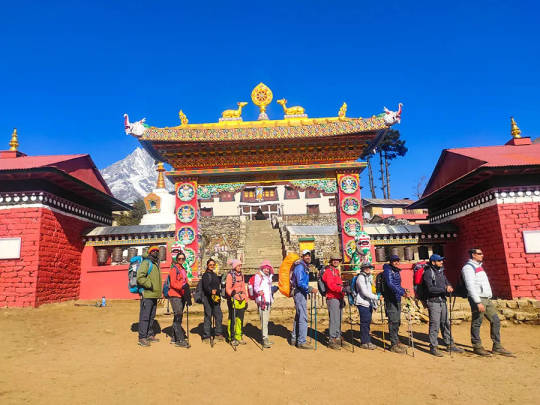
Along the EBC Trek, you’ll pass by memorials for famous mountaineers like Tenzing Norgay and Edmund Hillary, who first successfully summited Mount Everest. These memorials, located near Dughla and Tenzing Norgay Stupa, are poignant reminders of the courage and perseverance required to scale Everest. The sense of history adds a meaningful dimension to the trek, reminding trekkers of the great legacy left behind by these pioneers.
9. An Adventure That Will Stay With You Forever
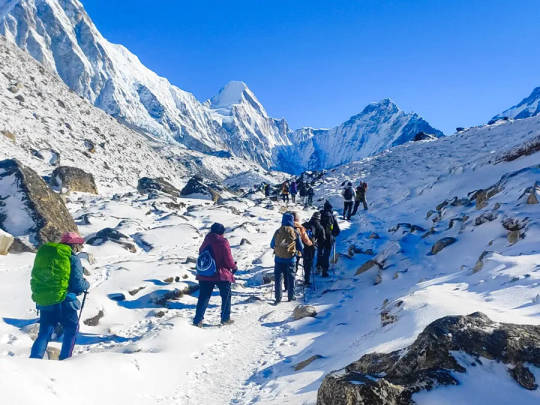
The Everest Base Camp Trek offers an adventure unlike any other. With each step, you’ll be rewarded with views of towering mountains, lush forests, rushing rivers, and ancient villages. It’s a trek that combines adventure, culture, and natural beauty, making it a bucket-list journey for trekkers across the globe.
Why Choose Trek The Himalayas for Your Everest Base Camp Trek?
When you embark on the EBC Trek, it's important to choose a reliable and experienced trekking partner. Trek The Himalayas has a team of expert guides and porters who know the Everest region inside and out. With our years of experience, we ensure your trek is safe, enjoyable, and unforgettable. From the right gear to acclimatization advice, we’ll help you prepare for the journey of a lifetime.
Ready for the adventure of a lifetime? Let Trek The Himalayas guide you on the Everest Base Camp Trek—an experience you will cherish forever.
#everest base camp trek#everest base camp#trek the himalayas#trekking in nepal#ebc trek#ebc trekking
2 notes
·
View notes
Text

On the road to Tengboche!
.
.
.
Ama Dablam, Himalayas, india by black.sail_ (IG)
5 notes
·
View notes
Text
Tengboche Monastery: The Largest Monastery Among The Highest Mountains in the Everest Region
Tengboche Monastery is a sanctified place of serenity and devotion that is highly regarded in Tibetan Buddhism. Located in the northeastern part of Nepal, in the Sagarmatha National Park, the monastery is the most widely known Buddhist monastery in the Himalayas of Khumbu. A place of spiritualism and sacredness, it is nestled among the alpine hills, with the stunning backdrop of Ama Dablam and the intersection of two reverberating rivers, Dudh Koshi and Imja Khola. At an elevation of 3,867 meters and directly falling on the route of the Everest Base Camp Trek.
History and Historical Importance
Established in 1916 by Lama Gulu, a Tibetan monk known for being blessed by Ngawang Tenzin Norbu, who was known to be the fifth incarnation of Sangwa Dorje,. The Tengboche Monastery has stood the testament of time, as it was struck by an earthquake in 1934 and again destroyed in a fire in 1989. It was rebuilt both times, and now it has become a symbol of peace and resilience among the Sherpas and trekkers.

The monastery is a well-respected landmark among the trekking and mountaineering communities. As it falls right on the route to Mount Everest, many trekkers and mountaineers make a stop here to light candles and get blessings for a successful summit. Hence, it is also known as the “Gateway to Everest.”
Art and Architecture
Talking about the arts and architecture, many paintings, books, murals, and statues were destroyed during the fire, and only a few were salvaged. Now the monastery has been rebuilt under the leadership of the current Nawang Tenzing Jangpo, who is considered the incarnation of the founder, Lama Gulu, with the help of the donations of the trekkers. The walls are decorated with the intricate arts of the bodhisattva, drawn by the Tibetan painter Tarke-la.
From the gates of the monastery to the inside walls, it is filled with detailed paintings and carvings of symbols and arts representing Buddhist teachings and blessings. The paintings and architecture are the perfect fusion of Nepali and Tibetan culture and arts.
Connection with Culture and Traditions: Mani Rimdu Festival and Dumji Festival

The festival is celebrated with elaborate elements of religious ceremonialism, dance, and drama. Beginning on the first day of the tenth month of the Tibetan Lunar Calendar, the festival is celebrated with traditional dances with masks, praying ceremonies, and feasts.
Similarly, the Dumji festival is also celebrated among the Sherpa communities of Solukhumbu. While the Mani Rimdu festival marks the founding of Buddhism, the Dumji festival celebrates the birth of its founder, Guru Rinpoche Padmasambhava. The festival primarily focuses on the connections between families and communities. It is an annual festival that is celebrated in the month of July, which follows the Tibetan lunar calendar. It is a four-day-long festival that helps bring the communities together, as every thirteen years, it is the duty of three families to provide food and beverages for the village during the celebrations.
In the end, these festivals are the pillars for the sustenance of the Sherpa communities, as they bring all the villages together to celebrate happiness and peace.
How do I get to Tengboche Monastery?
Tengboche Monastery Trekking is quite popular among trekkers, especially for those who wish to dive deep into Buddhism or are interested in celebrations of Sherpa cultures. This is why it is pretty common for people to book the trek just around the times of festivals like Mani Rimdu, Loshar, and Dumji. The trek to the Tengboche Monastery begins just like any other trekking destination to Everest, with a thrilling flight to Lukla. Then, your destination follows the classic Everest Base Camp route via Phakding and Namche Bazaar, and finally, you will reach Tengboche. It can be anywhere from 5 to 6 days of trekking, where you can enjoy the crisp air of the Khumbu.

As the trail runs through Sagarmatha National Park, you will require three permits: Trekker’s Information Management System (TIMS), Pasang Lhamu Municipality Fee, and Sagarmatha National Park Fee. The trek to the Tengboche Monastery will definitely be a spiritual and natural experience.
The path is mostly uphill as you trek through the alpine forest of rhododendrons along the side of the Dudhkoshi River. Upon your arrival, you will see a gate of entry and a grassy field. Then, you will finally see the monastery building, surrounded by beautiful peaks, most notably Ama Dablam.
What is the best time to visit the Tengboche Monastery?
Speaking of weather, the best time to visit falls during the spring (March-May) and autumn (September–November). During this time, the temperature is moderate, and the weather is nice, so you can see every mountain under the clear azure sky.

Luckily, the Mani Rimdu festival falls in October as well. Winter (December–February) is also the perfect time, as the weather is very clear, but it will be exceptionally cold. It will also be less crowded during the winter, so if you are well prepared to battle the freezing temperatures, you will have the best time. However, during the summer, it can be a bit tricky. The Khumbu region is very prone to rainfall, which can be a hindrance during the trek, especially with landslides occurring frequently, and poses a risk.
However, the mountain weather is always very tricky and is prone to frequent changes. Therefore, no matter which season, it is recommended that you follow a credible weather source before embarking on your treks or expeditions.
Things to take into account while visiting the Tengboche Monastery
Before anything else, one must know what this sacred site entails. Maintaining peace and respect while you visit is the top priority. Here is a list of things to follow during your visit to the Tengboche Monastery:
Dress modestly; people dressed in revealing clothes are not allowed inside the monastery.
Do not make noise or talk loudly on the premises of the monastery.
Make rounds of the monastery in a clockwise manner.
Greet and show proper respect to the monks.
Do not touch the monks, as physically touching the monks is forbidden.
Do not take photos or videos in the restricted zones of the monastery.
Know the proper stance when praying.
Pay respects by burning butter candles and incense.
A deep dive into the local lifestyle
The Sherpa communities have one of the most unique cultures in Nepal. With beautiful cultural dresses worn especially by the ladies and delicious Sherpa cuisine, you will have the time of your life during this trek. Especially during the festivals, you will come to witness vibrant, joy-filled interactions. Foods such as potatoes, yak cheese, dal bhat (rice and lentils), tsampa (barley flour), dhido, momo, thukpa, khapse, thenduk, and other delicious varieties are the highlights of this trip.
You will get a close-up look into the daily Sherpa activities such as morning prayers, preparing food, doing household chores, looking after their agriculture or animals, etc. Their simple lifestyle will bring you a sense of peace and yearning.
In conclusion
The trek to Tengboche is filled with rich natural and cultural influences that enhance your spiritual awakening. It is a short trek that will allow you to get the full experience of the ways of Buddhism as well as see the tallest mountain of the world, Mt. Everest, as well as other surrounding peaks such as Ama Dablam, Nuptse, Lhotse, etc.
So, if you are planning a trek to Tengboche Monastery, let us be at your service. We will arrange everything for you, from accommodation to transportation, with local and experienced guides. We guarantee you the best time with impeccable services.
For hassle-free and memorable trek experiences in Nepal, book your treks and tours with Alpine Ramble Treks. Contact us at 977-9851175531 or email [email protected] to make your trekking and expedition bookings for 2024/2025.
2 notes
·
View notes
Text
Everest Base Camp Trek - Conquer the Roof of the World!
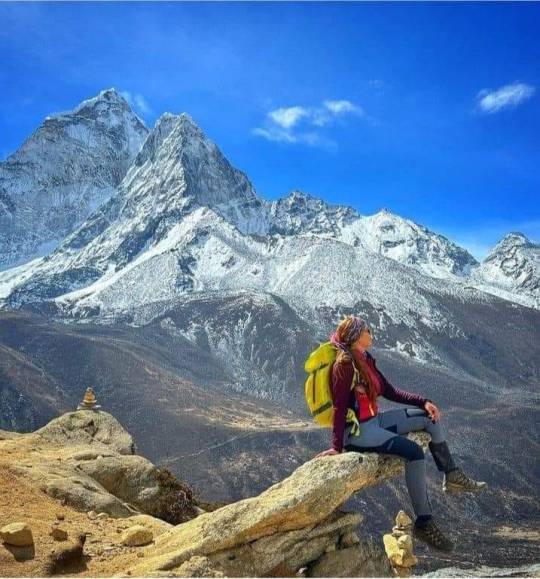
🏔️ 📅 Trip Duration: 14 days
📍 Destination: Nepal
🏞️ Trip Difficulty: Strenuous
🚍 Transport: Kathmandu - Lukla - Kathmandu
🍽️ Meals: Breakfast, Lunch & Dinner (BLD) during the trek 🏠
Accommodation: Cozy Teahouses & Lodges
👥 Group Size: Small & Personalized (Min. 1 / Max. 15)
⛰️ Max Elevation: 5,364m - Everest Base Camp
⏰ Walking Hours: 5-7 hours daily
🏁 Start/End: Kathmandu/Kathmandu
🚶♂️ Trekking Type: Local Lodge-based Tea House Trek
🌈 Best Season: February to May, September to December
🌟 TRIP HIGHLIGHTS
Trek to the base camp of the world's highest mountain, Mount Everest.
Experience the breathtaking beauty of the Khumbu region.
Witness stunning panoramic views of Everest, Lhotse, Nuptse, and more.
Explore the Sherpa culture and traditions in mountain villages.
Visit the famous Tengboche Monastery and receive blessings for a successful trek.
Travel with a small group for an intimate and personalized experience.
📋 DETAILED ITINERARY
Day 1: Arrival in Kathmandu Arrive in Kathmandu,
the bustling capital of Nepal. Meet your trekking guide and fellow adventurers. Rest and prepare for the exciting journey ahead.
Day 2: Flight to Lukla, Trek to Phakding (2,651m)
Take a thrilling flight to Lukla, the gateway to the Everest region. Embark on the trek to Phakding, passing through picturesque landscapes.
Day 3: Trek to Namche Bazaar (3,440m)
Continue the trek along the Dudh Koshi River. Climb up to Namche Bazaar, the vibrant Sherpa trading hub.
Day 4: Acclimatization Day in Namche Bazaar
Acclimatize to the increasing altitude in Namche Bazaar. Explore the town and enjoy panoramic views of Everest and surrounding peaks.
Day 5: Trek to Tengboche (3,867m)
Trek through rhododendron forests and reach the Tengboche Monastery. Experience the serene ambiance and panoramic mountain vistas.
Day 6: Trek to Dingboche (4,260m)
Descend to Debuche and cross the Imja River. Climb uphill to Dingboche, a beautiful village surrounded by mountains.
Day 7: Acclimatization Day in Dingboche
Take a day to acclimatize in Dingboche. Hike to Nagarjun Hill for breathtaking views of Ama Dablam and Lhotse.
Day 8: Trek to Lobuche (4,930m)
Trek through the moraines of the Khumbu Glacier. Reach Lobuche, a popular stop before reaching Everest Base Camp.
Day 9: Trek to Everest Base Camp (5,364m) and Gorak Shep (5,140m)
Ascend to the ultimate destination, Everest Base Camp. Witness the majestic Khumbu Icefall and the towering Everest. Descend to Gorak Shep for overnight stay.
Day 10: Hike to Kala Patthar (5,545m),
Trek to Pheriche (4,371m) Early morning hike to Kala Patthar for a stunning sunrise view over Everest. Descend to Pheriche, another beautiful Sherpa village.
Day 11: Trek to Namche Bazaar Trek back to Namche Bazaar,
enjoying the scenic landscapes. Relax and celebrate the successful completion of the trek.
Day 12: Trek to Lukla Continue the trek to Lukla,
the last leg of the journey. Reflect on the incredible adventure and bid farewell to the mountains.
Day 13: Flight to Kathmandu Fly back to Kathmandu and transfer to your hotel. Rest and celebrate the achievement of reaching Everest Base Camp.
Day 14: Departure Say goodbye to Nepal,
carrying with you unforgettable memories. Depart with a sense of accomplishment and a love for the Himalayas.
💰 COST INCLUDES
Airport transfers upon arrival and departure.
Domestic flights (Kathmandu - Lukla - Kathmandu) with airport taxes.
Accommodation in a 3-star hotel in Kathmandu with breakfast.
Tea house or lodge accommodation during the trek.
All meals (Breakfast, Lunch & Dinner) during the trek.
Licensed English-speaking trekking guide.
Porter service (1 porter for 2 trekkers) to carry your trekking gear.
Sagarmatha National Park Entry Permit.
TIMS card (Trekker's Information Management System).
All government taxes and official expenses.
🚫 COST EXCLUDES
International airfare to and from Kathmandu.
Nepal entry visa fees (available upon arrival at Kathmandu airport).
Travel and rescue insurance (mandatory).
Personal expenses such as additional meals, drinks, and snacks.
Tips for trekking staff (guide, porter, etc.).
Any extra costs incurred due to unforeseen circumstances (natural disasters, flight delays, roadblocks, etc.).
Any services not mentioned in the "Cost Includes" section.
🗨️ FOR MORE INFORMATION AND BOOKINGS, CONTACT US: Email: [email protected] WhatsApp: +977-9808262524
https://www.missionsummittreks.com/trip/everest-base-camp-trek/
🌄 Embark on a journey to conquer Everest Base Camp! 🌄
2 notes
·
View notes
Text

The Everest Base Camp ( 5,364 meters, 17,598 feet) trek is one of the most popular and challenging treks in the world. Everest Base Camp Trek takes you through the stunning landscapes of the Himalayas, passing through small villages, forests, and glaciers, and ultimately leading you to the base of the highest mountain in the world, Mount Everest. (8,849 meters (29,031.69 feet). The Everest Base Camp trek begins in the town of Lukla (2860m), where you will take a flight from Kathmandu. From there, you will start walking towards Namche Bazaar (3440m), the gateway to the Khumbu region (Everest Region).
Though the ascent to Namche is challenging sometimes, the views of the surrounding peaks are breathtaking including the alluring Thamserkhu (6,608 m (21,680 ft). As you continue your trek, you will pass through small villages and settlements, where you will get a glimpse into the local way of life. You will also visit holy and historical monasteries including Tengboche (3870 M) and Thame and other cultural sites, which are an important part of the region's history and tradition. Everest Base Camp Trek is a real venture into the core Sherpa culture and civilization which are existing for ages.
#travel#tourism#everest base camp trekking#holiday#trekking#mountaineering#mountains#nature photography#snow#hiking in nepal#everestbasecamptrekcost#everestbasecamptrekitinerary
2 notes
·
View notes
Text
Saturday April 1
Trekking Day 7
Dingboche 14100ft to Lobuche 16200ft
Today was brutal. It started east and flat. Last night it snowed about 3in in Dingboche so we waited until about 9 to head out, an hour later than our normal starting time. That extra hour gave us some more sun, and some trekkers ahead of us to pack the snow on the trail.
The first three miles got us to our lunch spot and I had some delicious ramen and was ready to go for the final push in the afternoon. And then the wind came. The weather changed from sunny, 50ish, and calm winds, to cloudy, snowy, and temps in the 20s. Our only bad weather on the trek so I can’t complain too much.
Todays totals:
6.3 miles 2160 feet elevation gain 5:29 hours
We made it to our lodge for the night and this is by far the most basic of accommodations. Tonight’s spot and tomorrow nights spot will suck.
I’ve mentioned that we upgraded to upgraded rooms… in Namche that meant a normal room, but with our own toilet and electricity in the room. In Tengboche and Dingboche we had no electricity, but our own very basic toilets. Here we have just a tiny room and we’re sharing the toilet with those on the hall.
Tomorrow we wake up at 5 and head out at 6 to make it to EBC by 1pm before the clouds roll in. That seems to be the pattern, clear mornings, cloudy afternoons, and if there’s snow it’s in the afternoon or evening.
Ok.. time for dinner and hopefully in bed by 8 and asleep by 9!

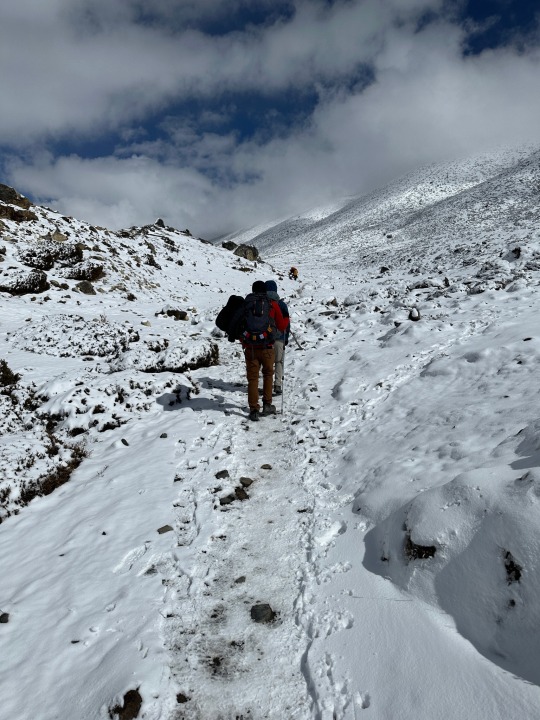

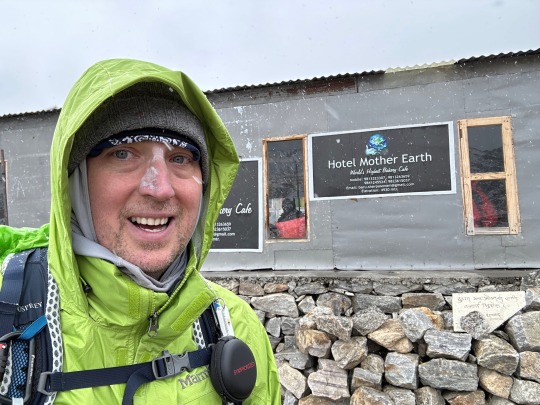



3 notes
·
View notes
Text
Everest Base Camp Trek: A Journey to the Roof of the World
The Everest Base Camp Trek is one of the most iconic trekking adventures in the world, offering breathtaking views of Mount Everest and the surrounding Himalayas. This trek takes you through picturesque Sherpa villages, lush forests, and rugged mountain landscapes, providing an unforgettable experience for adventure enthusiasts.

The Classic Everest Base Camp Trek
The Everest Base Camp Trek is a 12-14 day journey that starts from Lukla, a small mountain town accessible by a thrilling flight from Kathmandu. From Lukla, trekkers follow the legendary trail through Namche Bazaar, Tengboche, Dingboche, Lobuche, and finally reach Everest Base Camp at an altitude of 5,364 meters. Along the way, trekkers get to witness stunning views of Everest, Lhotse, Nuptse, and Ama Dablam. The trek also includes a hike to Kala Patthar (5,545 meters), the best vantage point for panoramic views of Mount Everest.

Everest Base Camp Trek with Helicopter Return
For those who want to experience the thrill of trekking but prefer a shorter return, the Everest Base Camp Trek with Helicopter Return is an ideal option. This trek follows the same trail to Everest Base Camp, allowing trekkers to immerse themselves in the Himalayan beauty. However, instead of retracing the route back to Lukla, trekkers take a helicopter from Gorak Shep for a scenic flight back to Kathmandu. This option not only saves time but also provides a mesmerizing aerial view of the Everest region, including glaciers, valleys, and snow-covered peaks.

Everest Base Camp Helicopter Tour: A Luxurious Adventure
If trekking is not an option but you still want to witness Everest up close, the Everest Base Camp Helicopter Tour is the perfect choice. This luxurious tour offers an exciting helicopter ride from Kathmandu to Everest Base Camp, allowing travelers to experience the grandeur of the Himalayas in just a few hours. The helicopter lands at Kala Patthar or Everest View Hotel, where passengers can enjoy breathtaking views and capture stunning photographs. This tour is ideal for those with limited time or those who wish to experience Everest in ultimate comfort.
Whether you choose the classic Everest Base Camp Trek, the Everest Base Camp Trek with Helicopter Return, or the Everest Base Camp Helicopter Tour, each option provides a unique and unforgettable journey into the heart of the Himalayas.
#Everest Base Camp Trek#Everest Base Camp Trek with Helicopter Return#Everest Base Camp Helicopter Tour
0 notes
Text
Top 5 Mountaineering Peaks in Nepal.
Nepal is known as the land of the Himalayas Nepal is a paradise for mountaineering lovers. It has some of the sky-scraping peaks of the World such as the highest peak of the World Mt. Everest. Here, you can have some diverse peaks to give you different challenges and experiences. From skyscraping Everest to the technical climbs of Makalu, Nepal is home to mountaineering peaks for everyone from the novice to the experienced adventure climber.
So, in this blog, you will read about the best 5 mountaineering peaks in Nepal:
1. Mera peak:

Mera Peak, standing at 6,461 meters, is the most popular peak for climbing in Nepal. Located in the eastern part of the country within the Makalu-Barun National Park and Conservation Area, it offers an ideal adventure for first-time trekkers seeking an adrenaline rush without requiring advanced technical expertise. Once you reach the summit, you'll be rewarded with breathtaking views of some of the tallest mountains in the world, including Mt. Everest, Makalu, Kanchenjunga, and Lhotse.
The climbing route of Mera Peak consist of various landscapes and astonishing views of great mountains and walking through glaciated region. Chukung is the starting point for the trek to this trekking peak. Afterward, head toward the path of Hinku Valley. After that, we will trek to Khare at the altitude of 5090 m. We will reach Mera La pass. Then, we'll visit the Base Camp of Mera Peak after Mera La. Furthermore, the route expands until Camp 1 (6100 m) and then the last summit of Mera Peak. This trek takes approximately 15 days to complete.
Highlights of Mera Peak
Experience diverse landscapes, from alpine meadows to high-altitude deserts.
Explore the Sherpa Village, learn about their culture & traditions, and interact with the locals.
Breathtaking vistas of the highest peaks such as Mt Everest, Makalu, Lhotse, Kanchenjunga, and Cho Oyu.
Experience a peaceful and less crowded trail.
Offers a great introduction to mountaineering without broad preparation.
2. Island Peak

Island Peak is the most accessible mountaineering peak in the Everest region. This peak offers a challenging yet achievable climbing experience. Island Peak, also known as Imja Tse, reaches an elevation of 6170 m. The hike to Island Peak generally takes 16-20 days. More so, Edmund Hillary, and Tenzing Sherpa, the world's greatest climber, trained through this peak and discovered the path that to this date remains in use.
There are some technical parts of Island Peak, but with proper training and guidance, it would be a great option for people who are in good physical shape. For climbing to the Island Peak, the base camp starting point for the peak is at an altitude of 5087 meters above sea level. Climbing up to High Camp at 5600 meters reduces most of the effort and time on summit day.
Highlights of Island Peak
The mesmerizing view of Everest, Changtse, Lhotse, Nuptse, and many more.
Tengboche is the biggest monastery in the Everest Region.
Khumbu Icefall and Glaciers.
Passing through beautiful valleys and Sherpa Villages.
Discover unique flora and wildlife on the trail.
3. Lobuche Peak:

This trek would take around 17 days usually to complete This peak can be taken with those who may want to challenge and reap all the rewards with a Himalayan climb without vast technical climbing. The trekking peak in Nepal will present to you the gift of the breathtaking views of Lhotse, Ama Dablam, Nuptse, and many more. As a training site, The Lobuche East Peak is renowned among would-be mountaineers. Climbers could conquer this mountain faster than many other mountains within just about 3-4 days.
Highlights of Lobuche Peak
Hike to Everest Base Camp trek
Breathtaking vistas of Mt Everest from the Lobuche Peak.
Pass by the Khumbu Glacier, the world’s highest glacier.
Explore the unique Sherpa settlements and their culture.
Trek through prayer flags and monasteries via suspension bridges and through thick woods.
4. Pisang Peak:
Pisang Peak lies between Annapurna I and Manaslu in the Manang district. Since this is not one of the challenging peaks, the 6091-meter Pisang peak is one of the easiest climbing peaks in Nepal. The peak provides the best travel to different ecology, panorama, and culture. The round trip from Pisang takes almost 18 days.
As you gain altitude, you can enjoy the fantastic views of the Annapurna massif and other Himalayan peaks. The route from this trek has a well-defined trail to the Annapurna Circuit. Generally, the spring and autumn seasons are known to be ideal to climb Pisang Peak. Climatic conditions remain fair in these periods along with bright weather and reasonable temperature.
Highlights of Pisang Peak
Exploration of Lower Mustang and Marshyangdi Valley.
Hike through the colourful rhododendron and bamboo forest.
Visit Thorong La Pass, the highest pass in the world.
The adventurous trek around Annapurna massif.
Explore the fantastic steep mountainside, Swarga Dwari, and Gates to Heaven.
5. Yala Peak:

At an altitude of 5,500 meters, it is ideal for first-time climbers with average fitness. The technicalities to be used are also minimal hence a good starting point for attempting mountain climbers. The tour to Yala takes about 13 days.
From Gompa, it is possible to reach this mountaineering peak in three days by taking the High Base Camp route. The trek is easy and scenic, and you will learn much from the climb. Panoramic views from the summit include Langtang Lirung (7,246m), Dorje Lakpa (6,990m), Gangchempo (6,388m), and Sishapangma (8,027m).
Highlights of Yala Peak
Stunning hike to Langtang village through the dense forest.
Tamang individuals and their rich cultures are other things to see.
You can explore the Chortens and Mani walls on the trekking course to Kyanjin Gompa.
It is less touristy and less crowded than other trails in Nepal.
Marvellous view of Langtang Lirung (7,246 m) and Ganesh Himal from Kyanjin Ri and Yala peak top.
Conclusion
Whether you are an experienced mountaineer or an aspiring climber, Nepal has the most unbelievable landscapes, incredible culture, and friendly locals. You will never forget visiting this country. When you begin your Himalayan adventure, respect these mountains, their environment, and the people who call these mountains home. Your adventure partner, Happy Mountain Nepal will make your trip enjoyable and hassle-free.
FAQs
What are the best seasons for climbing peaks in Nepal?
The best season for climbing g peaks is Spring (March-May) and autumn (September-November).
Do I need prior climbing experience for these peaks?
Not every peaks need prior experience such as Mera Peak and Yala Peak are easy and best for beginner.
What permits are required for mountaineering in Nepal?
Permits like Trekker's Information Management System (TIMS) card, and other essentials national park permit are required.
How physically demanding are these treks?
Physical fitness differs as per the peak levels, but good physical condition is needed for all climbs.
What is the average cost of climbing these peaks?
The avarage cost of climibing these peaks depend on the peak, guide services, permits, and other logistics.
#trekking in nepal#Peak Climbing in Nepal#Island Peak Climbing#Lobuche Peak Climbing#Mera Peak Climbing
0 notes